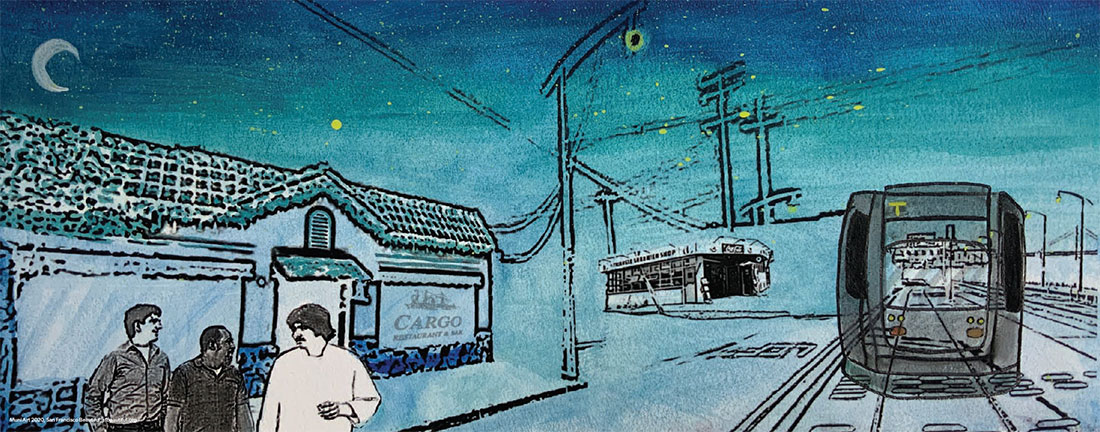
In this series, guest columnists choose to reflect on one of three prompts provided by ELGL Co-Founder Kent Wyatt. This week, Thom Fowler, Senior Administrative Analyst at the San Francisco Municipal Transportation Agency, writes about incorporating his love of art into his day job.
Sign up to be the next guest columnist for the ‘I Have to Ask’ column.
Several years ago I was an active member on the board of the Municipal Managers Association of Northern California. I was an ambitious new member and I volunteered to co-chair the Winter Forum, an annual signature networking and professional development event. As chairs, we had the privilege of choosing the theme. I had just finished a Human Resources internship with a parks and recreation special district and I wanted to continue to dive into publicly funded arts and culture. I offered the idea of Arts and Parks and we decided to build the program from there.
I work for the City of San Francisco, which has an Arts Commission. Starting from our own Arts Commission, I was introduced to senior public art managers from Oakland and San Jose. The East Bay Regional Park District also has an annual “arts in the parks” program and we got a retiring deputy director on board to talk about the impact of public arts programs.
Since we were all bureaucrats as well as arts, recreation, and land stewardship people, we spent a lot of time talking about policy and risk and asset management. Because in order to have a robust public art program, you need to have policies and administrative structures in place.
Oakland talked a lot about their monthly Civic art walk – Art Murmur, which transforms streets into temporary parks, and features art, design and performance.
San Jose talked about managing a public art collection from a financial and legal standpoint. The fun part is acquisition, and then there is the ongoing maintenance, and annual overhead costs including risk.
A more contemporary issue for some cities, including San Francisco, is the removal and storage of memorials to institutional racism honoring a shameful and damaging legacy that we can’t change, but can transform going forward. The financial value is on the books – and that’s an important consideration for the controller’s office and the city’s financial position and public reporting. The cultural value of the artifacts are being debated, and in the future, other people will figure out how to curate and interpret them to the public. Analysts like me are keeping the wheels of the art program moving and through our Citywide Analysts Network, I am able to be part of the conversation that continues to lift up the arts as a budget and program priority. I want these programs to continue to succeed and grow as we hand off the mission and assets forward towards an unknown future.
In the building I worked in before we were all sent home to telecommute, many floors had loans from the city’s art collection. It was a great privilege to have contemporary works of art on display to enliven the atmosphere. The basement of City Hall acts as a rotating gallery, and the Arts Commission gallery curates shows of contemporary works and is free to the public.
My day job currently is in finance administration in the SF Municipal Transportation Agency’s capital program. So I’m far away from the programmatic work of the SF Arts Commission. And I’m far away from my office. And all the galleries and fine arts museums are closed. And City Hall is closed. I am encouraged and heartened that it will all still be there whenever and however we return to those former spaces we occupied.
The way municipal offices are designed rarely take into consideration the comfort and interest of the people who occupy them. They are usually what I call “Eisenhowerian” – designed with maximum efficiency in mind. Anything that can be done to break up the monotony with art is a service to the humanity of the people and the natural and cultural rhythms we are attuned to. It’s a consideration that municipal employees deserve.
Everyone is in the midst of their personal life story, and art and artists understand that we are having an aesthetic engagement with our day and our work. Art provides pleasure, and can stimulate personal and collective growth by making our framework of attention and analysis more sophisticated, and more sensitive to the emotional story that threads through our sometimes rigidly proscribed daily work. I do what I can to bring art into the midst of our work, not only as the work itself when it comes to Art Administration but also as a support to the people who are choosing to spend part of their life process giving something to the public.
